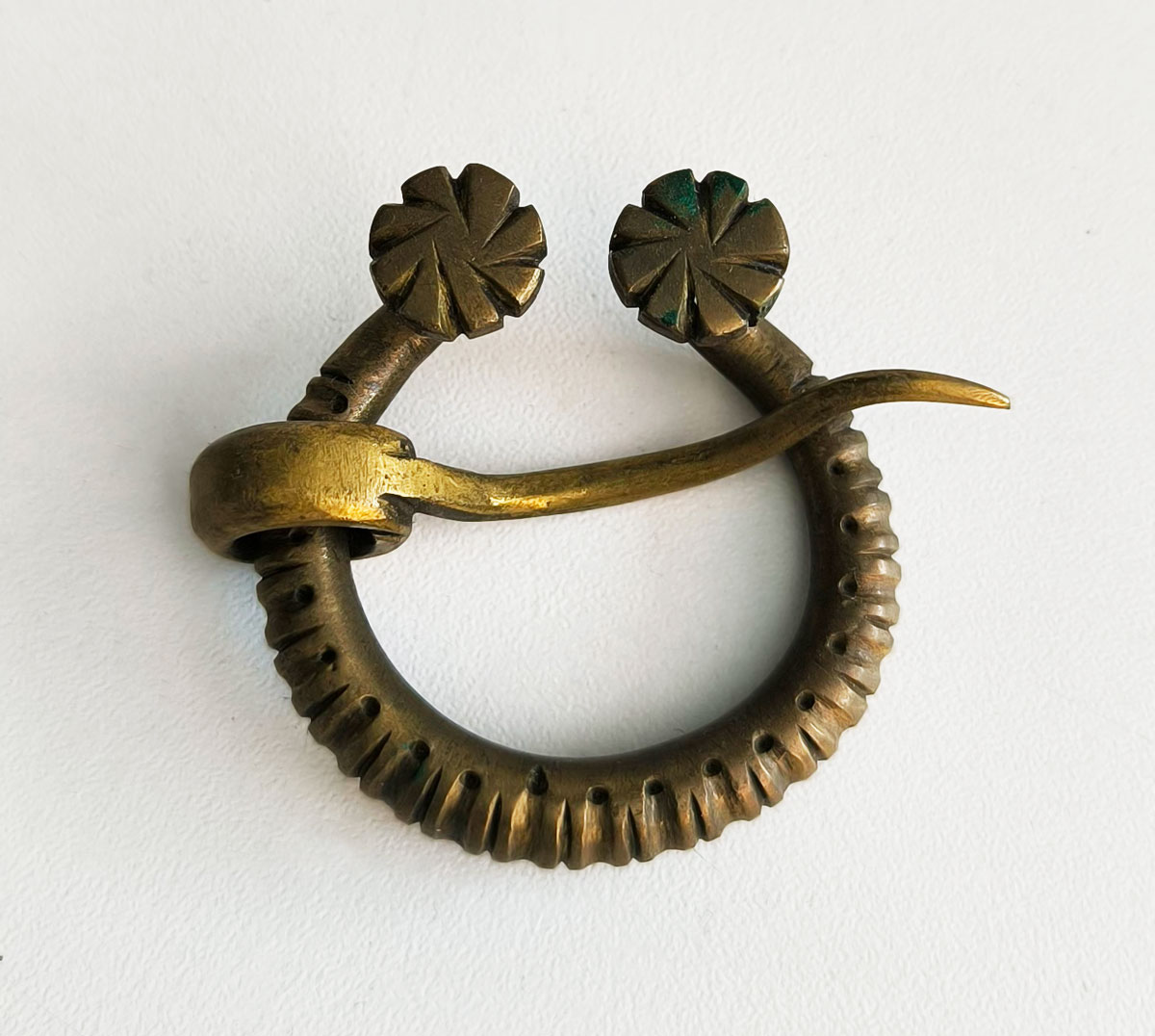

This Baltic brass brooch exemplifies how decorative objects in traditional societies functioned as carriers of cosmological understanding. Featuring sun and plant motifs drawn from archaeological findings dating to the Roman Iron Age, the brooch demonstrates the sophisticated visual language through which Baltic peoples expressed their relationship to natural and supernatural realms.
The prominence of solar imagery in Baltic decorative arts reflects the central role of the sun in pre-Christian European mythologies. As a symbol of life, regeneration, and cosmic order, the sun motif connects the wearer to universal cycles while simultaneously marking cultural particularity through specific stylistic execution. This dual function—expressing both universal patterns and cultural distinctiveness—characterises effective mythological symbols across cultures.
The integration of plant imagery alongside solar motifs creates a visual narrative of cosmic fertility—the sun's generative influence on earthly growth. This relationship between celestial and terrestrial realms represents a fundamental pattern in agricultural mythologies worldwide, where human prosperity depends on correctly understanding and ritually acknowledging cosmic influences.
The brooch's function transcended mere decoration, serving simultaneously as practical fastener, status marker, and potentially protective talisman. This multidimensional functionality illustrates how pre-modern societies integrated practical, social, and spiritual concerns within unified symbolic systems rather than separating them into distinct domains. The preservation and contemporary reproduction of such designs demonstrates how mythological symbols maintain cultural resonance even when detached from their original belief contexts, serving as tangible connections to ancestral worldviews.
𝌇 READ: "Expositions", Lithuanian National Museum of Art.
↑ ▢ "Baltic Brass Brooch Replica"; Photographer: Aušra Jasiukeviciūtė.
Copyright: Source materials belong to the public domain sources they originate from. See source site links for full rights and usage details. Materials shared on this site are used in accordance with Public Domain, Creative Commons, Open Access licenses, or applicable Fair Use principles. All rights remain with the original creators.
Copyright: Source materials belong to the public domain sources they originate from. See source site links for full rights and usage details. Materials shared on this site are used in accordance with Public Domain, Creative Commons, Open Access licenses, or applicable Fair Use principles. All rights remain with the original creators.